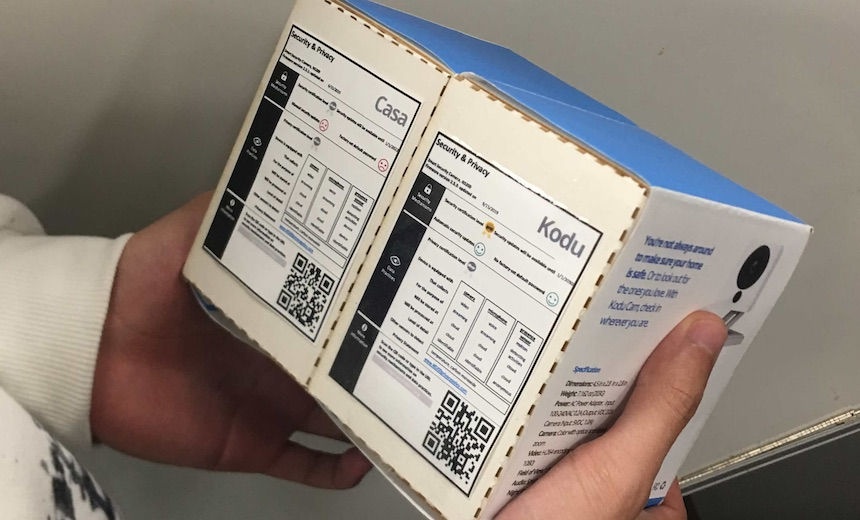Why Security Labelling Matters in the IoT Era?
- Mariane Gregorio
- Jul 31
- 4 min read

Building Trust in a Connected World
In our previous blog, we shared how Genesys joined IoTAA’s Executive Council to help shape the future of smart device security in Australia. By becoming part of this leading industry body, Genesys is actively influencing IoT standards, best practices, and security initiatives that benefit both businesses and consumers.
But strengthening IoT security isn’t just about setting standards. It’s also about making security visible and understandable for everyone.
And that’s where security labelling comes in.
From smart homes and wearables to connected cars and critical medical equipment, the Internet of Things (IoT) is deeply embedded in our daily lives. While this connectivity brings convenience and innovation, it also raises a critical question:
How can we know if a device is truly secure before we bring it into our homes, workplaces, or networks?
Security labelling is emerging as a key solution, bringing clarity and confidence to the IoT ecosystem.
What Is IoT Security Labelling?
IoT security labelling is a simple, visual indicator that communicates the level of cybersecurity a device offers. It can show:
Whether the manufacturer provides regular security updates
Encryption and authentication practices used
Compliance with recognised cybersecurity standards
Some labels even include QR codes linking to real-time security details.
Countries like Singapore and Finland already run voluntary security labelling programs, while the United States (NIST) has piloted similar initiatives.
Just like energy efficiency labels on appliances, IoT security labels give consumers a clear way to understand the safety of a device before they buy it.
“The Internet of Things brings serious security and privacy concerns, and devices vary considerably in how well they are secured, making it difficult for consumers to differentiate between more and less secure devices.” PLOS ONE Journal - The impact of IoT security labelling on consumer product choice and willingness to pay
Why Security Labelling Matters
Transparency for consumers: Security labels help buyers easily compare devices, leading to more informed and safer choices.
Better industry practices: When security becomes visible, manufacturers are incentivised to improve standards to stay competitive.
Global harmonisation: As more countries adopt security labels, it creates a foundation for common cybersecurity benchmarks across regions.
Insights from Genesys Experts
Robert Truong, Lead Embedded Systems Engineer at Genesys, shares his perspective:
“Security labelling is important because it builds trust in the security and implementation of IoT devices. A lot of devices implement their own bespoke security mechanisms, or lack them completely, so having labelling that details the level and to what standard is important.”
He also highlights that a clear IoT security label should include key information such as:
The type of data being collected and transmitted
The methods used to secure this data storage and transport.
Whether the manufacturer commits to providing regular software updates.
But Robert points out the challenges too:
Costs and complexity: it takes time and resources to implement labelling frameworks, and not all consumer devices have the budget or need for it.
Relevance: for some devices (like a smart lightbulb or a simple temperature sensor), security risks are minimal.
Independent verification: without regulatory frameworks, it’s hard to ensure that labelling is reliable and unbiased.
“I think government needs to be involved, not just industry. Without regulatory frameworks, it will be hard to ensure independent verification,” he adds.
Challenges on the Road to Adoption
Security labelling has enormous potential, but it’s not without hurdles:
No universal standard: Each country is creating its own version of labels, though efforts like ISO/IEC 27404 aim to unify approaches.
Keeping labels accurate: Cyber threats evolve quickly, so labels must provide dynamic, updated information, possibly via digital solutions like QR codes.
Industry buy-in: Manufacturers need both incentives and support to adopt robust security labelling.
“Labels must empower consumers while remaining accurate over time. Static labels risk becoming outdated as threats evolve." Communications of the ACM - Internet of Things Security and Privacy Labels Should Empower Consumers
The Role of Industry Collaboration
In Australia, the IoT Alliance Australia (IoTAA), whose Executive Council includes Genesys Electronics Design, is working with government, regulators, and industry leaders to shape the future of IoT security standards.
By fostering dialogue across manufacturers, researchers, and policymakers, initiatives like IoTAA’s labelling frameworks aim to create a trusted and scalable approach to IoT cybersecurity.
This aligns with the broader global movement. The UK, EU, and several APAC countries are also considering mandatory or voluntary labelling schemes.
This collaborative approach builds directly on what we shared in our previous blog: how Genesys is actively contributing to IoT security leadership through IoTAA.
Looking Ahead
Security labelling isn’t a silver bullet, but it’s a crucial step toward building confidence in connected technologies.
It makes security visible and actionable, something that benefits consumers, industry, and regulators alike. As more countries adopt these programs, companies that lead with transparency will stand out in the rapidly growing IoT market.
Because in the IoT era, trust is everything.
Security labelling is more than a sticker, it’s a promise of safer, smarter technology.
.png)


